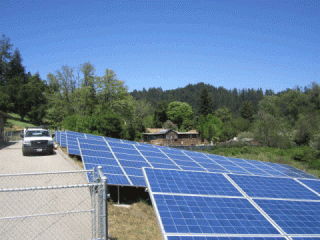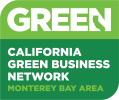Sustainability

In 2008, SLVWD adopted resolution No. 2 (08-09) Climate Change and Water Resource Management, through which the District committed to implementing the goal of the California Global Warming Solutions Act (AB 32): reducing GHG emissions to 1990 levels by 2020; and further to 80% below 1990 levels by 2050. The District has implemented the following sustainability practices and tracked progress through carbon footprint reporting.
Renewable Energy
Solar Power
Beginning in 2011, the District installed solar panels at all three of its facilities, with a current system size of 6 kW. Producing solar power reduces the District’s carbon emissions and reduces electricity costs.
Solar Power Output Data (Live)
100% Renewable Electricity
The District's administrative office is now powered with 100% renewable energy, from sources like solar and wind, through Central Coast Community Energy.
Green Business Certification
The District has been a Certified Green Business since 2017 with the California Green Business Network.

Carbon Footprint Reporting
A carbon footprint is the total CO2 and other greenhouse gases produced by a home, business or government agency. To measure its carbon footprint, SLVWD joined the California Climate Action Registry (CCAR) in 2007 and the national Climate Action Registry (CAR) in 2008. Using established protocols, SLVWD has assessed and reported its greenhouse gas emissions (GHG) starting in 2006. GHG Reports have been certified by CCAR and CAR, with SLVWD consistently recognized as a Climate Action Leader. Below are links to the most recent GHG report and an archive of past reports:




